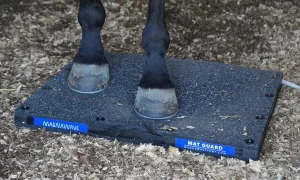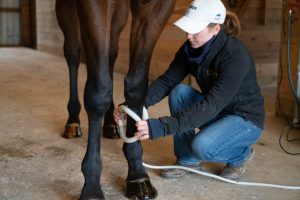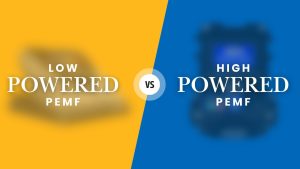The Role of PEMF Therapy in Modern Health: An Evidence-Based Overview
Pulsed Electromagnetic Field (PEMF) therapy is increasingly recognized in clinical and research settings for its potential to support pain relief, tissue regeneration, and overall cellular function. While still under investigation in many areas, the growing body of scientific literature, more than 900 articles on PubMed alone, points to various therapeutic applications for PEMF, especially in musculoskeletal health, athletic recovery, and inflammation management.
Clinical Evidence for Pain Reduction
PEMF therapy has shown promising results in reducing pain associated with several musculoskeletal conditions. A meta-analysis of 12 randomized controlled trials (Li et al., 2018) reported significant pain reduction in knee and hand osteoarthritis patients. Another systematic review (Andrade et al., 2016) demonstrated its efficacy in managing chronic low back pain, noting improvements in pain scores and functional mobility.
Post-surgical applications have also been studied. One investigation (Heden & Pilla, 2009) found that PEMF significantly reduced pain and swelling following surgical procedures, aiding in faster recovery. Additionally, clinical research on fibromyalgia (Thomas et al., 2009) observed a reduction in chronic pain with minimal side effects.
Applications in Bone and Joint Healing
PEMF therapy has been explored for its regenerative potential in bone repair. Animal studies (Strauch et al., 2023) suggest enhanced bone regeneration and tendon strength with PEMF exposure. In clinical settings, it has been used as an adjunctive therapy for non-union fractures and spinal fusions, with some protocols receiving FDA clearance (Ryang et al., 2009).
In early-stage osteoarthritis, PEMF may aid chondrocyte activity (Ganesan et al., 2016), potentially slowing cartilage degradation and promoting joint health.
Advancements in Wound Healing and Circulatory Support
Chronic wound care has also benefited from PEMF intervention. One clinical study (Heden & Pilla, 2009) found that PEMF therapy reduced the size of pressure ulcers by up to 84%, compared to a 40% reduction in control subjects.
Furthermore, recent research (Yuan et al., 2024) has demonstrated its ability to stimulate angiogenesis and enhance microvascular circulation. It offers a promising approach to support tissue regeneration in patients with compromised blood flow.
Neurological and Anti-Inflammatory Potential
Emerging data suggests that PEMF may also modulate inflammatory responses and enhance neurological health. Studies in preclinical models (Strauch et al., 2023) have reported improved cerebral blood flow and reduced neuroinflammation, suggesting possible applications in neurodegenerative conditions.
Findings from the OAFI Foundation (2022) regarding joint inflammation indicate that PEMF may effectively reduce joint pain and slow degenerative processes in osteoarthritis.
Cellular Function and Athletic Recovery
At the cellular level, PEMF appears to influence metabolic activity and regeneration. A meta-analysis of 92 laboratory studies (Yuan et al., 2021) concluded that specific PEMF settings—particularly those involving higher frequencies and extended durations—can enhance cellular proliferation and repair.
In sports medicine, a study on shoulder impingement showed that PEMF, combined with exercise therapy, improved strength and reduced pain, suggesting a role in rehabilitation and recovery protocols.
Summary and Clinical Relevance
As the evidence base for PEMF therapy continues to expand, its use in managing pain, enhancing tissue repair, and supporting recovery is becoming more established. While further high-quality, large-scale trials are warranted, current research supports its potential as a non-invasive adjunct in integrative care approaches.
Disclaimer: This article is for informational purposes only and does not constitute medical advice. Always consult with a healthcare provider before beginning any new therapy.
References
- Andrade, R. et al. (2016). Pulsed electromagnetic field therapy effectiveness in low back pain. Porto Biomedical Journal, 1(5), 156–163.
- Ganesan, K. et al. (2016). Low dose short duration pulsed electromagnetic field effects on cultured human chondrocytes. Indian Journal of Orthopaedics, 50(1), 87–93.
- Heden, P., & Pilla, A. A. (2009). Effects of PEMF on postoperative pain. Aesthetic Plastic Surgery, 32(4), 660–666.
- Li, S. et al. (2018). Efficacy and safety of PEMF in osteoarthritis. BMJ Open, 8(12), e022879.
- OAFI Foundation. (2022). PEMF and osteoarthritis research summary.
- Ryang, W. M. et al. (2009). Applications of PEMF in musculoskeletal disorders.
- Strauch, B. et al. (2023). PEMF and trauma treatment. Int J Mol Sci, 24(14), 11239.
- Thomas, A. W. et al. (2009). Low-frequency magnetic field for chronic pain. Pain Res Manag, 14(6), 429–436.
- Yuan, Y. et al. (2021). PEMF effects on cellular responses: Meta-analysis. Biomed Res Int, 2021, 9875421.
- Yuan, J. et al. (2024). PEMF stimulates angiogenesis. Scientific Reports, 14, 12345.
More MagnaWave Research
More Research Coming Soon!
Hendrix Genetics – MagnaWave PEMF, turkey health and failure to thrive
Colorado State- MagnaWave PEMF & Equine Back Pain
University of New Hampshire – MagnaWave PEMF & Dairy Cattle clinical trial
University of Georgia – MagnaWave PEMF & Kissing Spine in Equine













